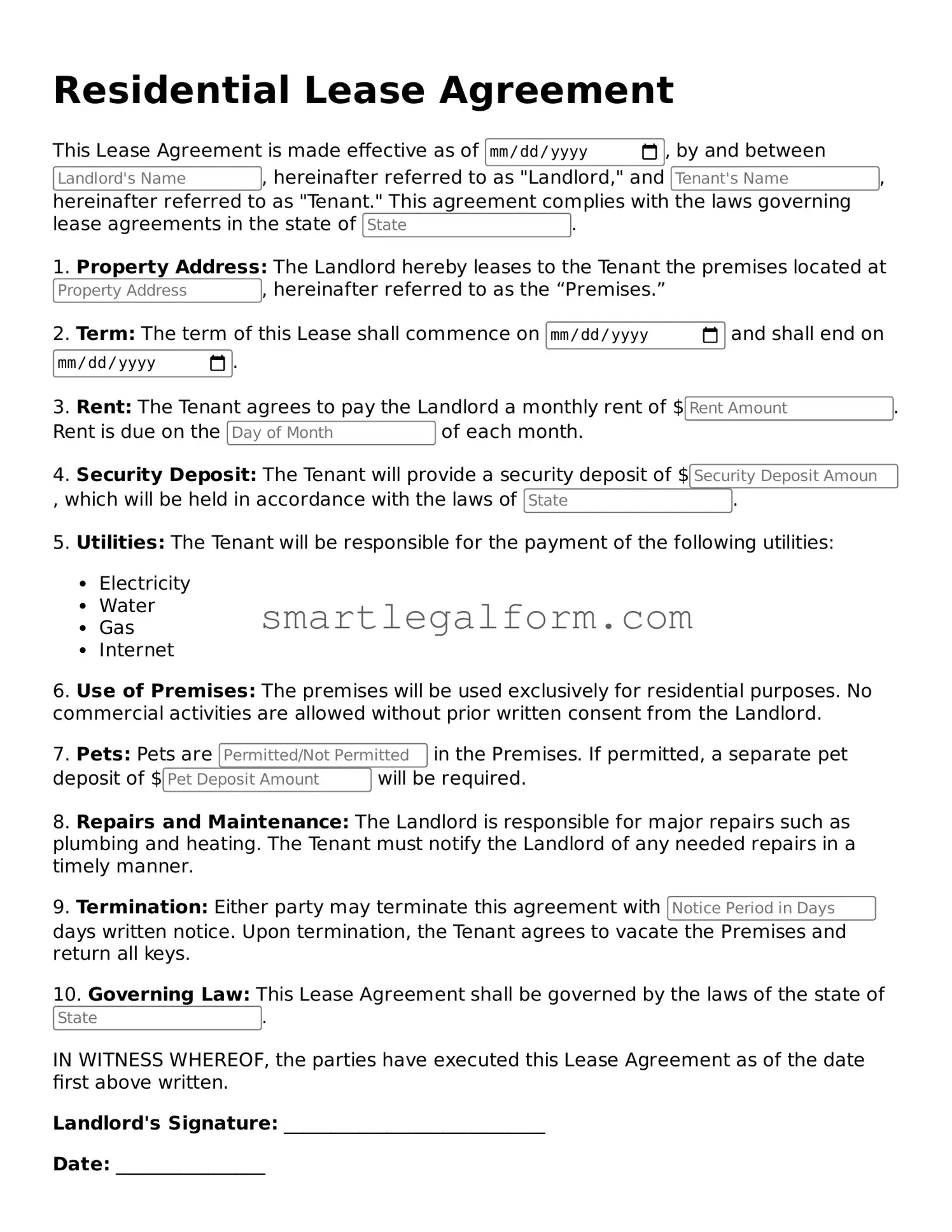Attorney-Approved Lease Agreement Form
A Lease Agreement form is a legal document that outlines the terms and conditions between a landlord and a tenant for renting a property. This essential contract protects the rights of both parties and ensures clarity regarding rental payments, duration of the lease, and property maintenance responsibilities. Understanding how to properly fill out this form is crucial for a smooth rental experience, so click the button below to get started!
Fill Out Your Form Online
